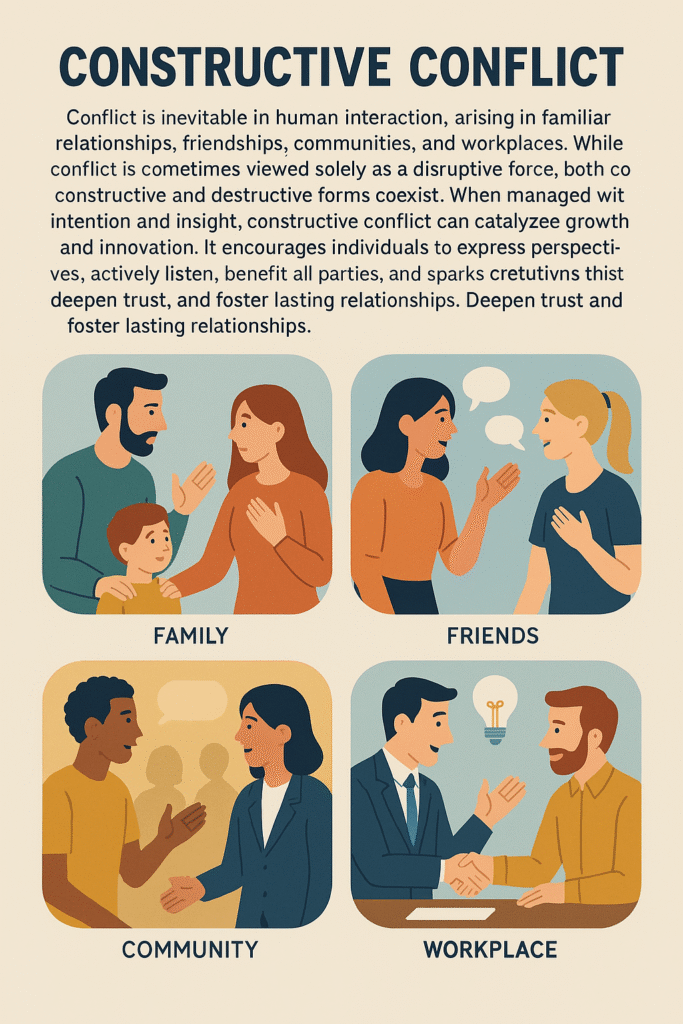Lesallan | May 24, 2025

Constructive and Destructive Conflict: A Path to Growth
Conflict is inevitable in human interaction, arising in family relationships, friendships, communities, and workplaces. While conflict is sometimes viewed solely as a disruptive force, both constructive and destructive forms coexist. When managed with intention and insight, constructive conflict can catalyze growth and innovation. It encourages individuals to candidly express their perspectives, actively listen to one another, and pursue solutions that benefit all parties. As Hocker, Berry, and Wilmot (2022) explain, this form of conflict helps clarify issues, dispels misunderstandings, and sparks creativity. When parties engage in respectful communication, conflict becomes a means of deepening trust and fostering lasting relationships.
In contrast, destructive conflict is marked by negative behaviors that undermine communication and damage relationships. Destructive conflict often manifests in personal attacks, an escalation of emotions, and a win–lose mentality that leaves one or more parties feeling unheard or devalued. Such conflict is counterproductive because it not only stifles creativity but also corrodes morale and impedes collaborative efforts. Characteristics include defensive reactions, disregard for mutual interests, and persistent attempts to dominate rather than solve problems (Hocker et al., 2022). When conflicts take a destructive turn, they create stress and distract individuals from common goals.
To enhance constructive outcomes while minimizing negative effects, individuals and groups can adopt several key strategies. First, practicing active listening and maintaining open channels of communication are critical. By addressing issues early and expressing oneself clearly and respectfully, parties are more likely to understand the underlying needs driving the conflict. Additionally, adopting frameworks that emphasize vulnerability, accountability, and clear boundary-setting can transform a potential crisis into an opportunity for genuine connection. Organizational policies and training on conflict resolution also contribute to creating environments where conflicts are seen as opportunities rather than setbacks.
One of the most influential perspectives on conflict comes from Clair Canfield’s TEDx talk, The Beauty of Conflict (TEDx Talks, 2016). Canfield challenges the prevailing notion that conflict must be either avoided or fought aggressively. He argues that conflict, when approached with vulnerability and a willingness to understand, can reveal our deepest needs and empower us to transform our relationships. His emphasis on speaking responsibly and embracing vulnerability offers a refreshing takeaway: instead of perceiving conflict as inherently destructive, we might view it as a transformative process that paves the way for meaningful change.
In summary, while destructive conflict damages relationships and undermines collaborative efforts, embracing constructive conflict can yield profound insights and foster growth. By incorporating strategies promoting open communication and mutual respect, we can decrease negative outcomes and uncover the beauty inherent in every challenging interaction.
References:
Hocker, J. L., Berry, K., & Wilmot, W. (2022). Interpersonal conflict (11th ed.). McGraw-Hill.
TEDx Talks. (2016, December 1). The beauty of conflict [Video]. YouTube.


